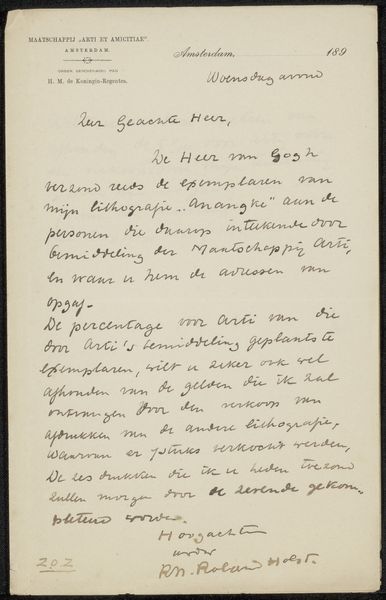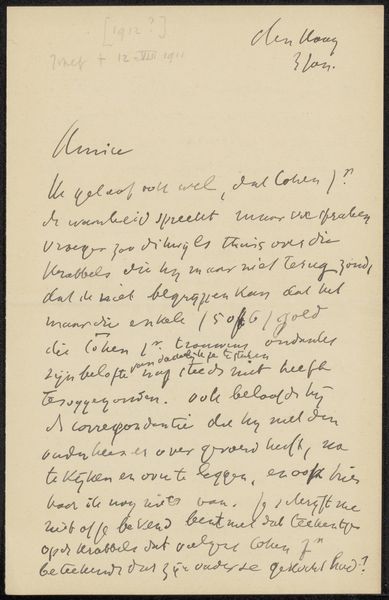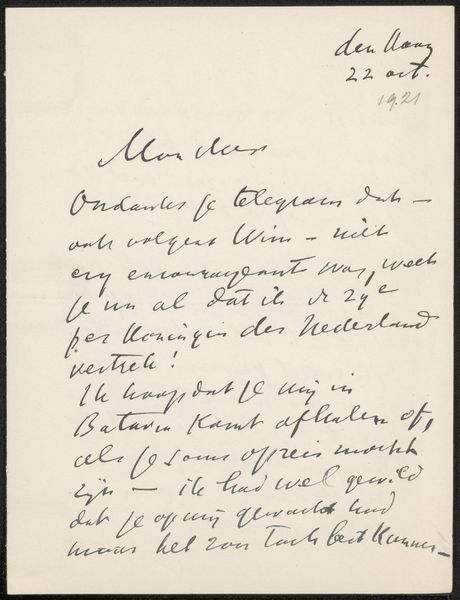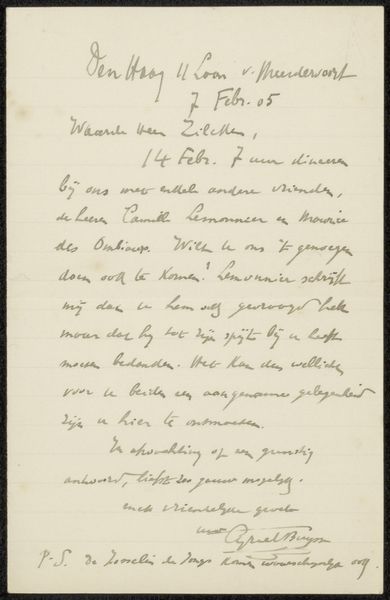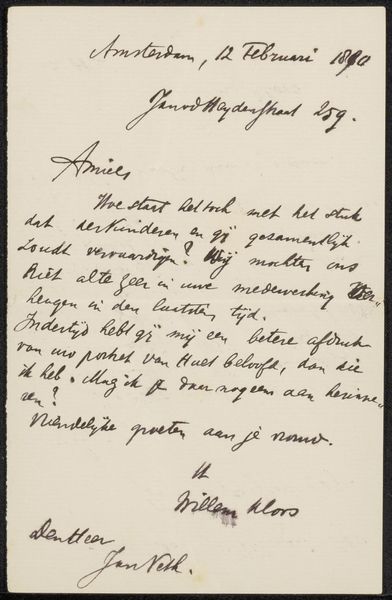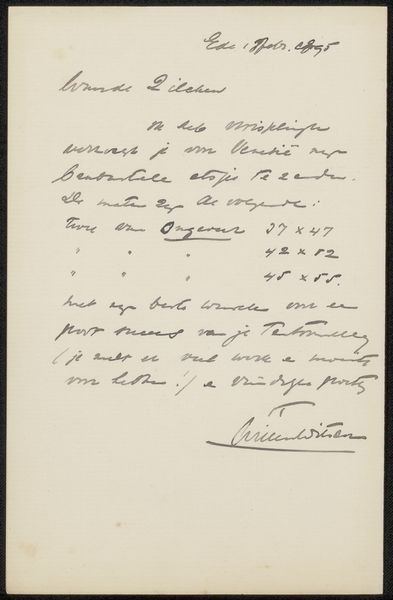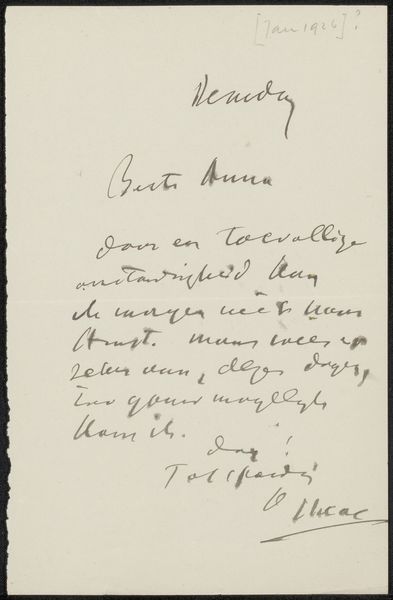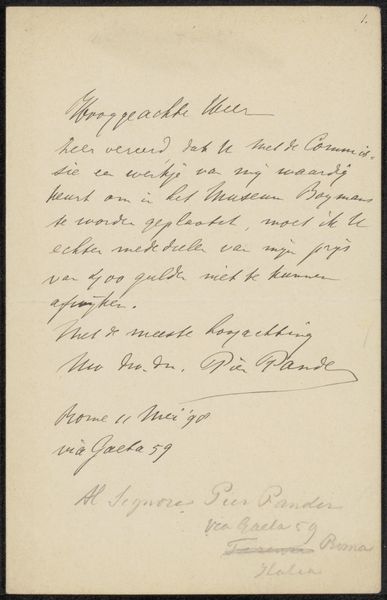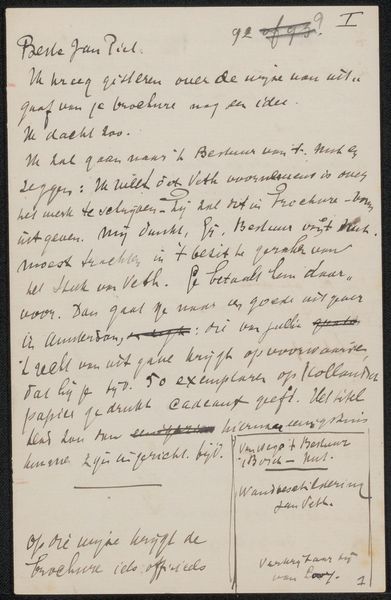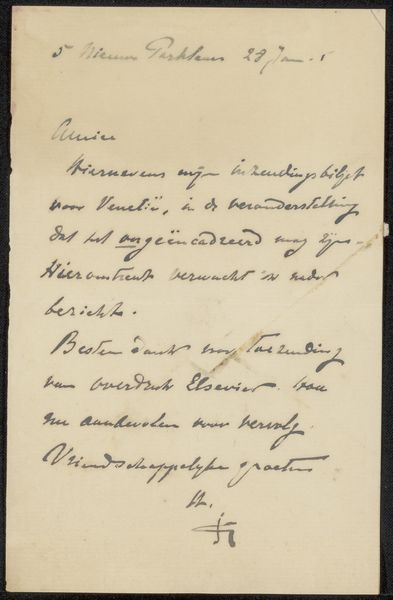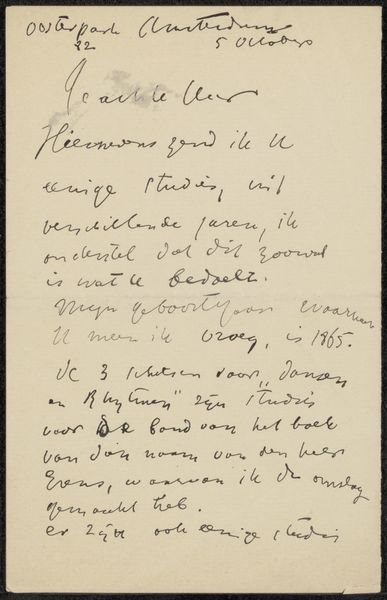
drawing, ink, pen
#
drawing
#
pen sketch
#
ink
#
pen
#
calligraphy
Copyright: Rijks Museum: Open Domain
Curator: What we have here, student, isn’t just any old piece of paper; it’s a window into the past, a whispered conversation across time. Isaac Israels, through a pen and a bit of ink, manages to trap the ephemerality of thought itself. Editor: Right. This is "Brief aan Jan Veth" by Isaac Israels, probably created sometime between 1875 and 1925. It's an ink and pen drawing, so mainly text—almost calligraphy—but the handwritten nature gives it a sense of intimacy. What do you make of something that is primarily a document? Curator: Precisely! It's a dance between the public and the private, wouldn’t you agree? Think of it this way: a letter is an island. It is afloat in a sea of the mundane. This letter is to Jan Veth, fellow artist and critic, we get a peep into the artistic dialogue of the era. Can’t you almost feel the artistic energy simmering beneath the surface? The man muses on his works, his sketches...he talks of the works that had been reproduced! And, the all-important ‘Krabbels’... Editor: 'Krabbels'? Scribbles? So what’s interesting here isn't just the fact that it's a letter but that it’s mentioning these seemingly informal doodles and discussing whether to include the "scribbles" for reproduction. Does this then speak to the creative process itself? Curator: Aha! Precisely! Consider the very materiality of it all. Look at the paper; imagine Israels' hand moving across the page. Ink bleeds and pools...this, student, is living history, the ghosts of conversations past! How might our perceptions of Israels's larger, more finished works change with this glimpse into a letter between confidantes? Editor: This glimpse behind the curtain actually makes Israels, the person, feel far closer and his work seems much more intuitive. Curator: Indeed, it humanizes him, breathes life into his legacy. You begin to ponder on the work involved and on the relationship between patron and scribe. We come away perhaps more informed... Editor: Absolutely, I hadn’t expected to find so much character in an old letter!
Comments
No comments
Be the first to comment and join the conversation on the ultimate creative platform.
